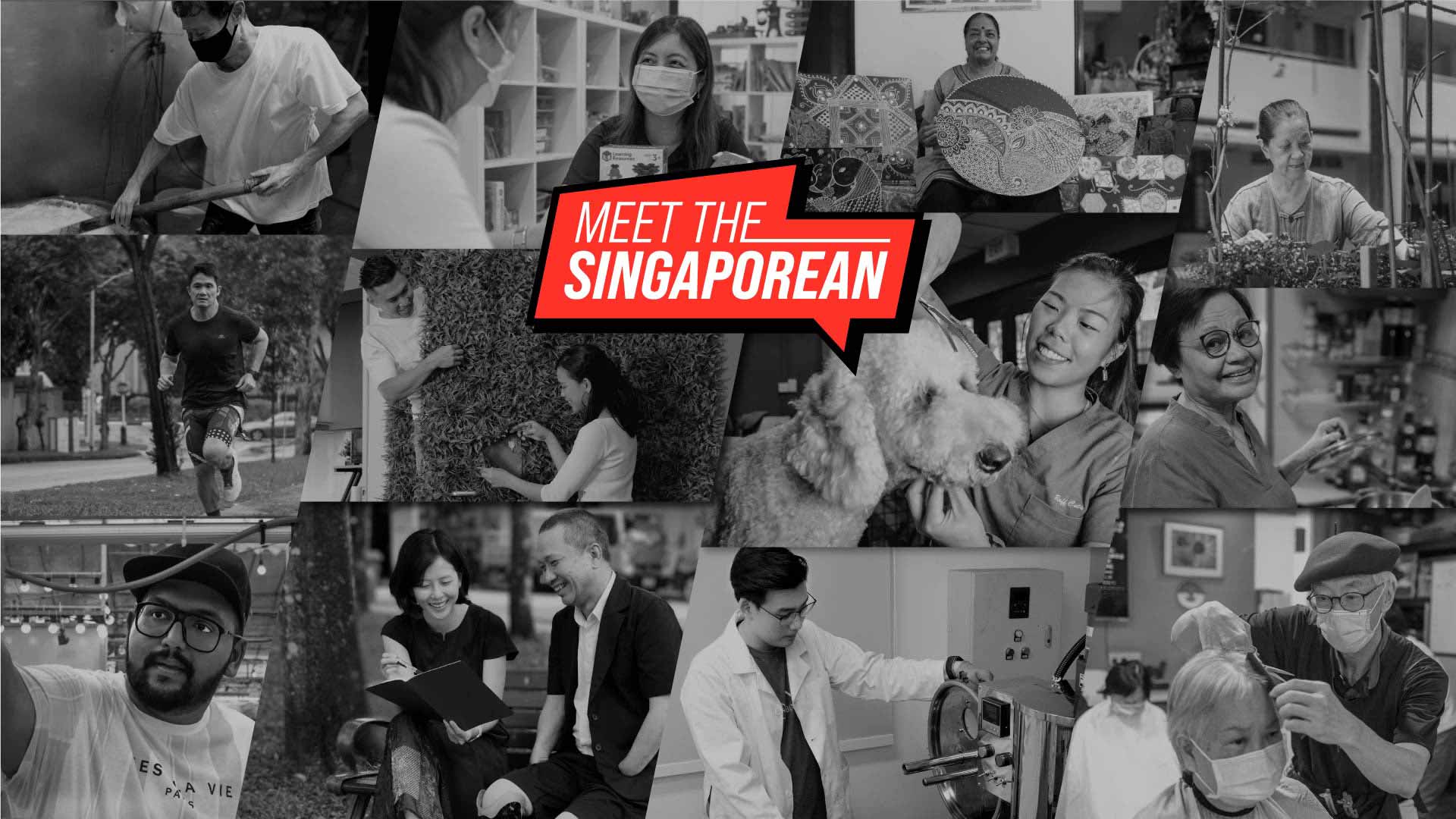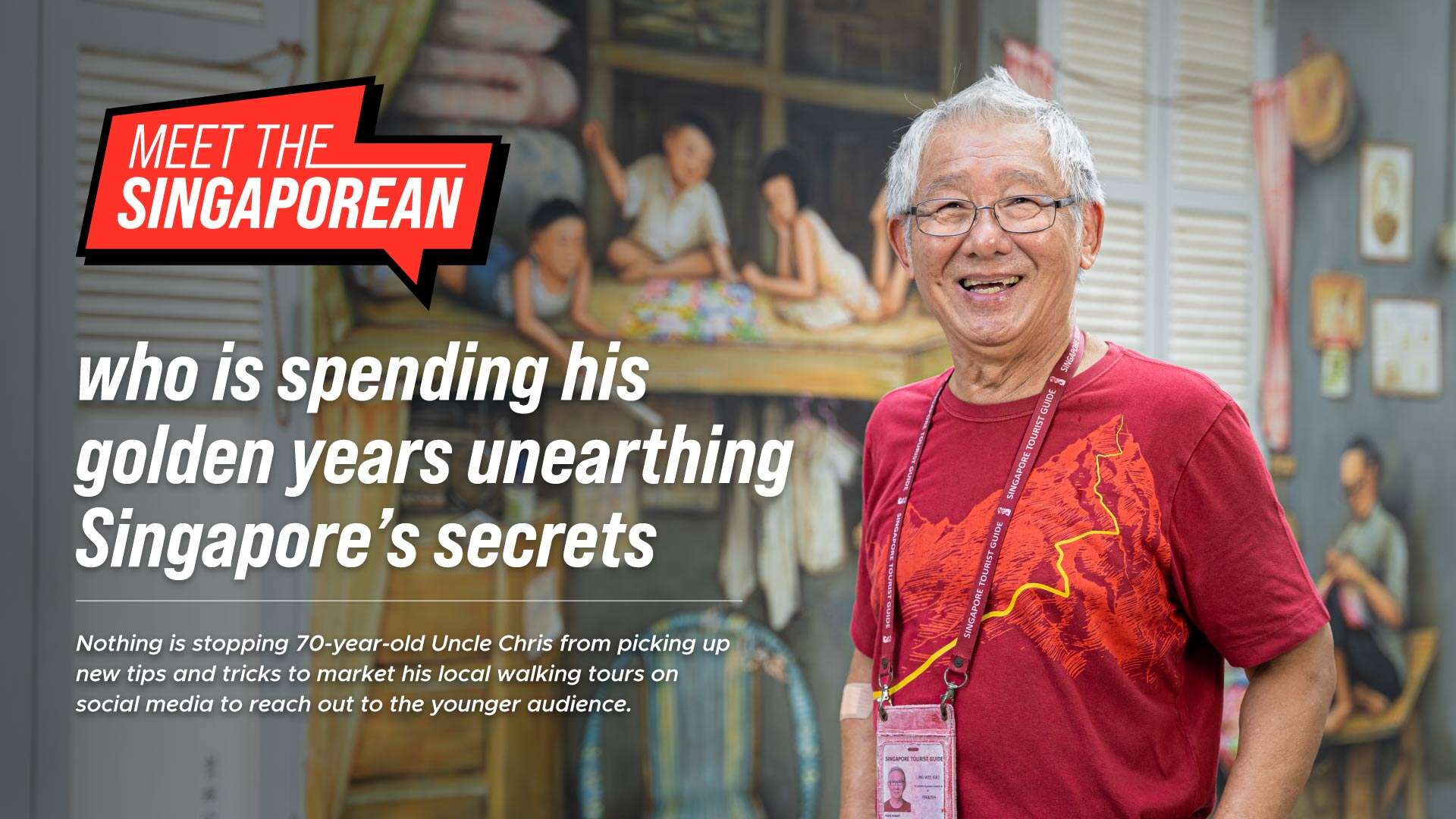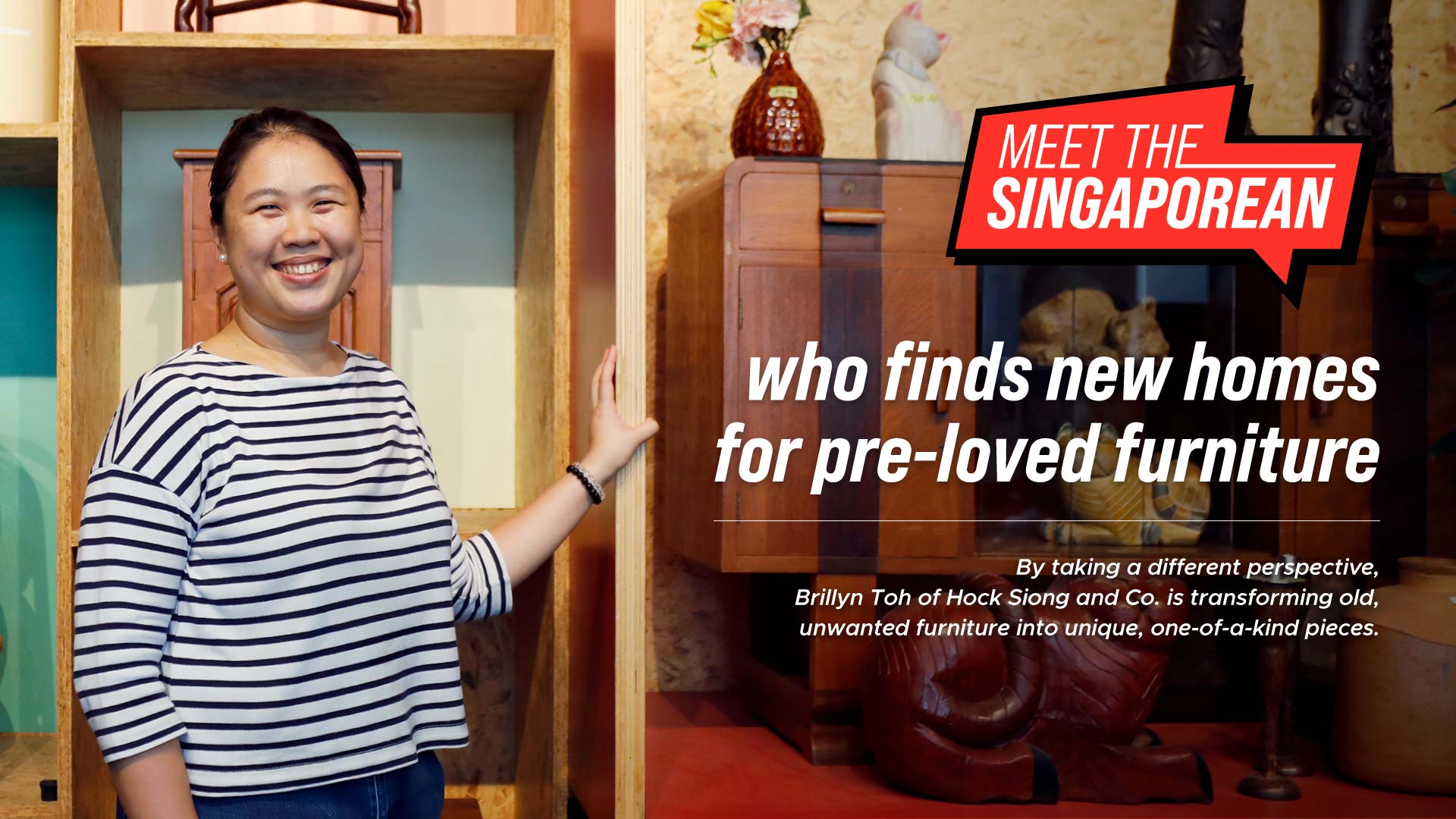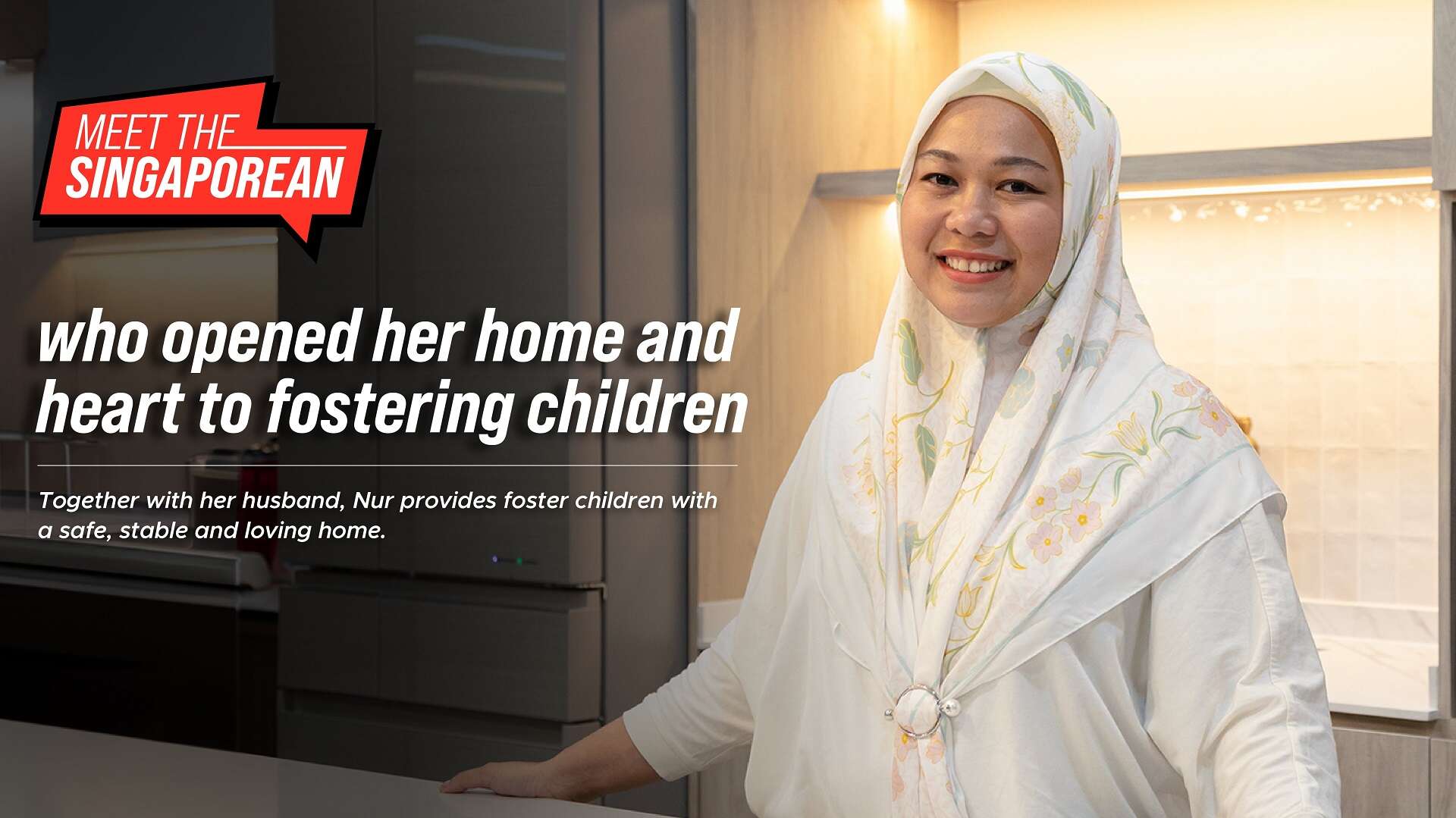
Meet the Singaporean - Lily Goh
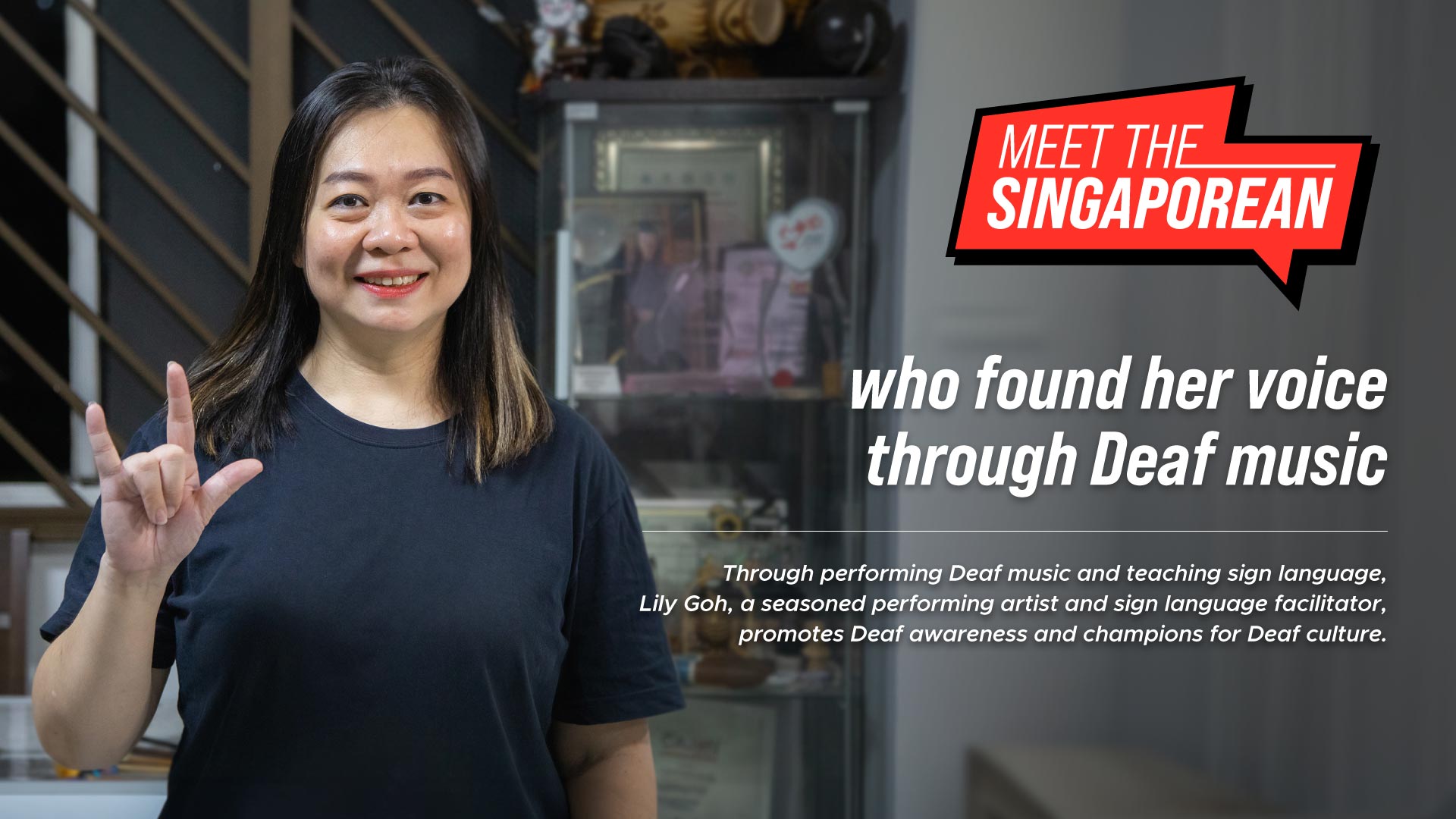
We enter an elegant hotel ballroom one evening just as a choir rehearsal is underway. Amid the harmonious blend of both melody and voices, we notice one lady at the very front of the stage, ‘singing’ along in a different way. With a smile, she raises her hands and elegantly expresses the song through fluid gestures and lively facial expressions.
This is Lily Goh, a Deaf arts and music practitioner who uses a combination of sign language, facial expressions and body movements to creatively express the meaning of a song.
“Music can be expressed in different forms. It is a medium or language that anyone can connect with, regardless of hearing ability,” she says.
An introduction to music
Deaf since the age of two, Lily was first introduced to the world of music while studying at a school that caters to children with hearing loss. One of her earliest memories was of playing small instruments like the triangle during music lessons. However, she soon found herself feeling “bored” of it.
At the age of ten, she was chosen to be part of the school’s percussion band. For Lily, there was more excitement than hesitation about joining the band, and she was especially curious about percussion instruments that she had never seen before. Excited to try something new, she eventually learnt to play the xylophone, which she greatly enjoyed.
“For me, playing the xylophone is an all-sensory experience that goes beyond hearing the sounds it makes. When I strike the bars with the mallet, I can feel the vibrations through the instrument stand and the floor. Even seeing the conductor waving his hand as he counts the beats is part of that experience.”
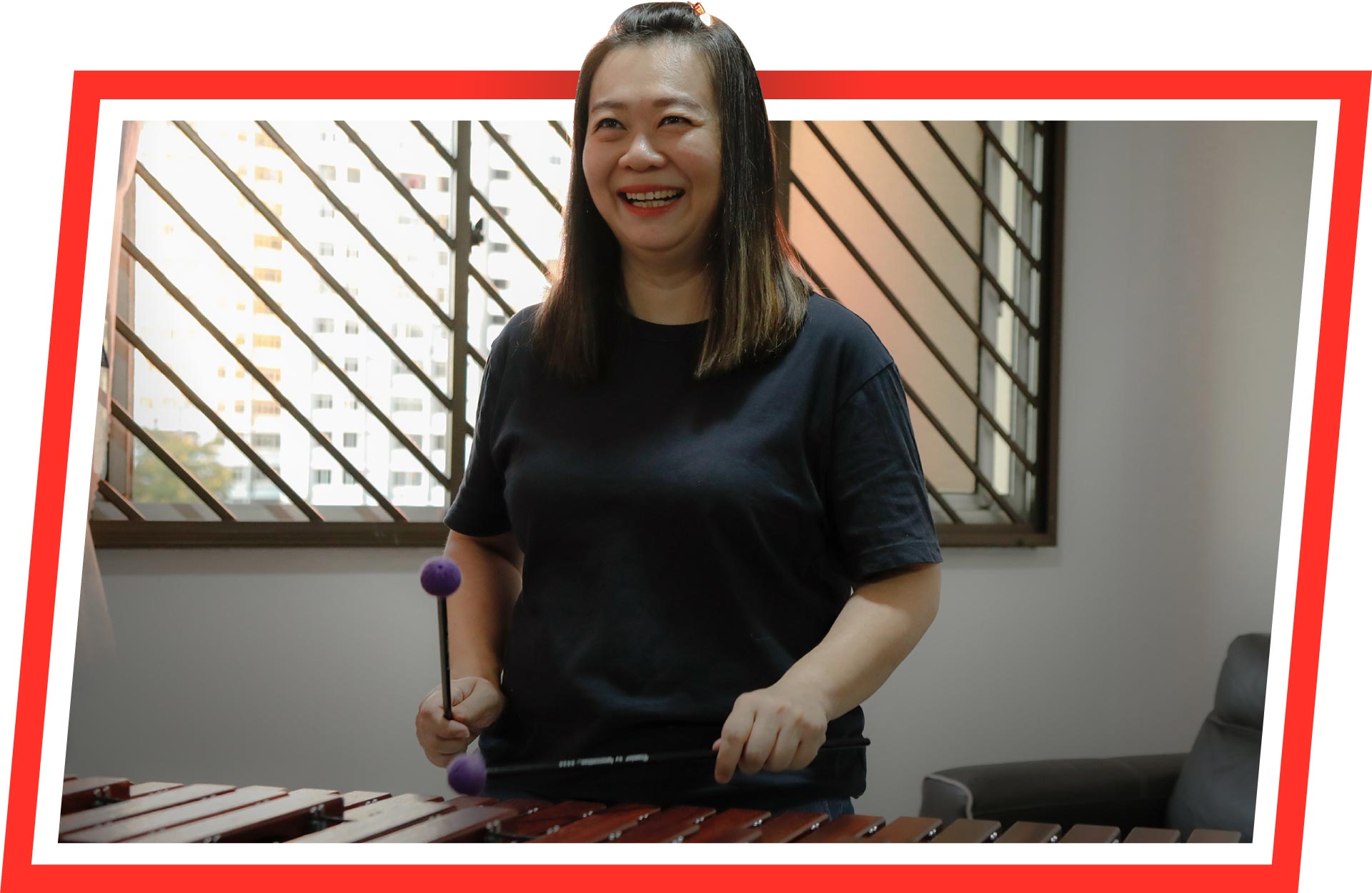
(Lily Goh playing the xylophone, feeling the vibrations through the instrument stand and the floor. / Photo by Type A)
Lily enjoyed playing alongside her deaf band mates, and she was even empowered to lead them in the absence of their band instructor. However, her experience differed in secondary school, when she joined the concert band. “I was the only deaf person in the band, and I couldn't communicate with my hearing band mates, because they didn't know sign language. So it was both challenging and lonely to play alongside them.”
Despite these challenges, Lily continued to hone her percussion skills, and went on to obtain formal music grades in percussion, music theory and even piano. Today, she still plays the xylophone, and has even picked up playing other percussion instruments such as the marimba, cajon and Chinese drums. However, it was during her time in polytechnic that she discovered her true musical passion – Deaf music.
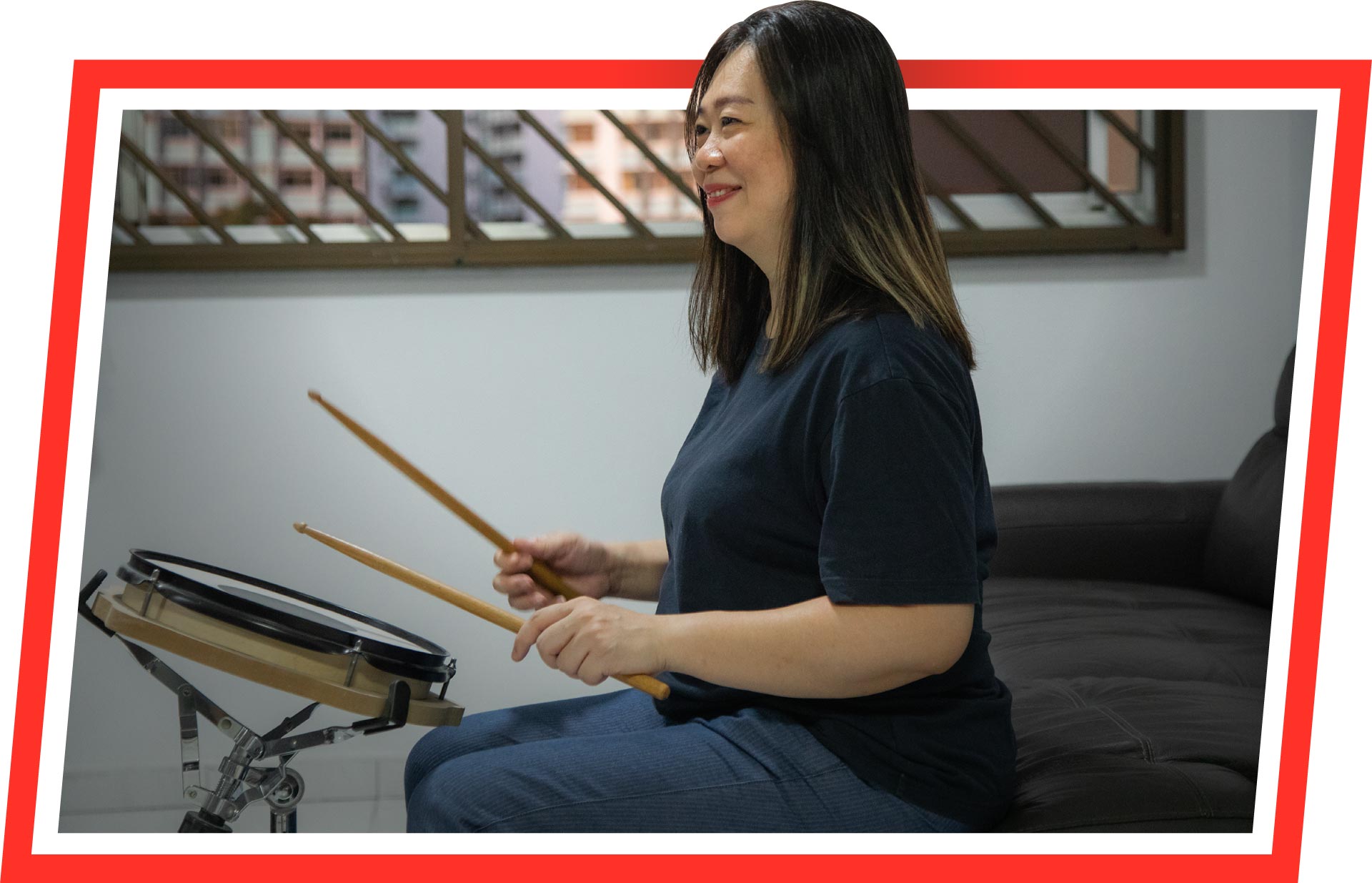
(Lily Goh playing on her drum pad. / Photo by Type A)
Finding her musical forte
At that time, Lily joined a recreational club that bridges hearing and non-hearing communities through sign language. Aside from offering sign language courses, the club also conducted song signing activities. “This was where I learnt about song signing (now known as Deaf music), and I thought it was interesting to see songs being performed using sign language, though mostly word-for-word interpretation.”
A turning point came when a sign language interpreter approached Lily one day and asked her to “come up with [her] own way of expressing music”. This led her to do her own research into the topic to better understand the concept of Deaf music.
“Deaf music is a visual art form, and I realised that if I just signed the song word for word, it could get boring for deaf people,” she explains. “As a Deaf performer, I am a visual storyteller. When I perform a song through sign language, it is about presenting it in a way that deaf audiences can experience visually, while helping them understand the meaning behind the lyrics.”
Performing Deaf music has also given Lily the liberty to incorporate her experiences as a Deaf person. Aside from the sensorial aspect of how she enjoys music and shares it with others, it is also through her own lived experiences. One example is her interpretation of the song ‘Let It Go’, from the soundtrack of a popular animated movie. Through it, she tells the story of how a Deaf lady with the ability to speak finds freedom in expressing herself through sign language.
Playing percussion music may have started off her musical journey, but she finds much more fulfilment when performing Deaf music. “Deaf music is a creative form of storytelling and visual arts that belongs to Deaf people. As a Deaf person, performing Deaf music is part of my culture and identity. It allows me to be more creative, provides a space to further explore and develop my art, and gives me the freedom to express myself. I also want to show that Deaf people can appreciate music as well, visually through sign language.”
Bringing Deaf music and culture to a wider audience
Through the years, Lily has gained recognition as a Deaf music performer, and has performed at events both locally and regionally. Some notable milestones include representing Singapore at the 2014 ASEAN Festival of Disabled Artists in Myanmar, and being part of the virtual choir interlude at the National Day Parade 2022.
Lily has also created songs of her own. One of her original songs, ‘If You Were In My Shoes’, is “about a deaf person facing rejections in life but still standing strong, believing in what she can achieve”.
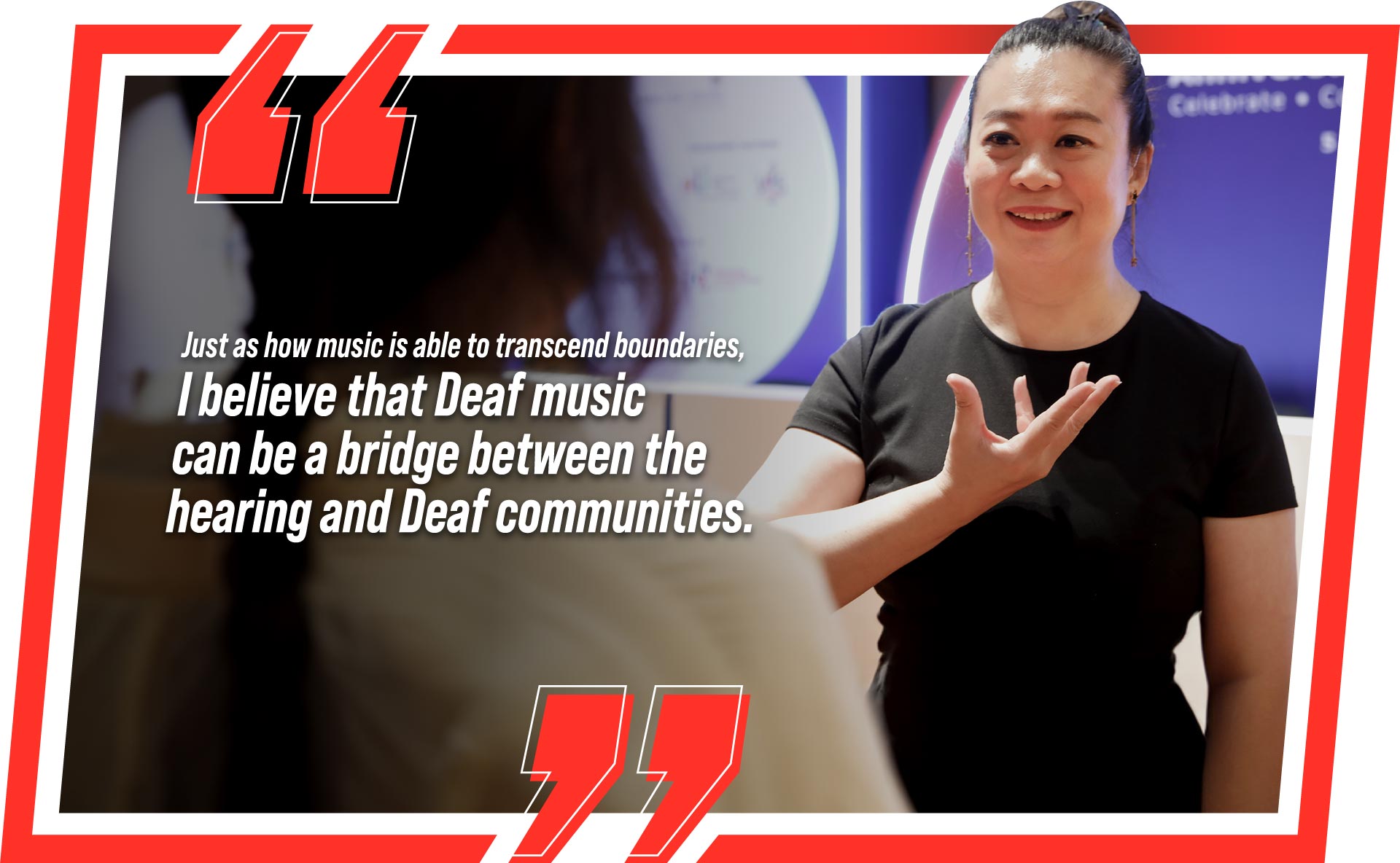
(Photo by Type A)
Just as how music is able to transcend boundaries, she believes that Deaf music can be a bridge between the hearing and Deaf communities. “Deaf music is a way for the Deaf community to connect with the wider community, and to share more of Deaf culture with them. On the other hand, Deaf music can help the wider community better understand the challenges faced by the Deaf community and connect through sharing the same language – music.”
In 2011, Lily founded ExtraOrdinary Horizons (EOH), a learning platform that promotes Deaf awareness through sign language courses, workshops, and performances. Along with conducting sign language courses, she also regularly hosts livestream sessions, teaching Singapore Sign Language and visual-gestural communication (a non-verbal mode of communication) to audiences who are interested in communicating with Deaf people. As sign language is an important mode of communication within the Deaf community, she hopes that more people in the wider community would consider learning sign language.
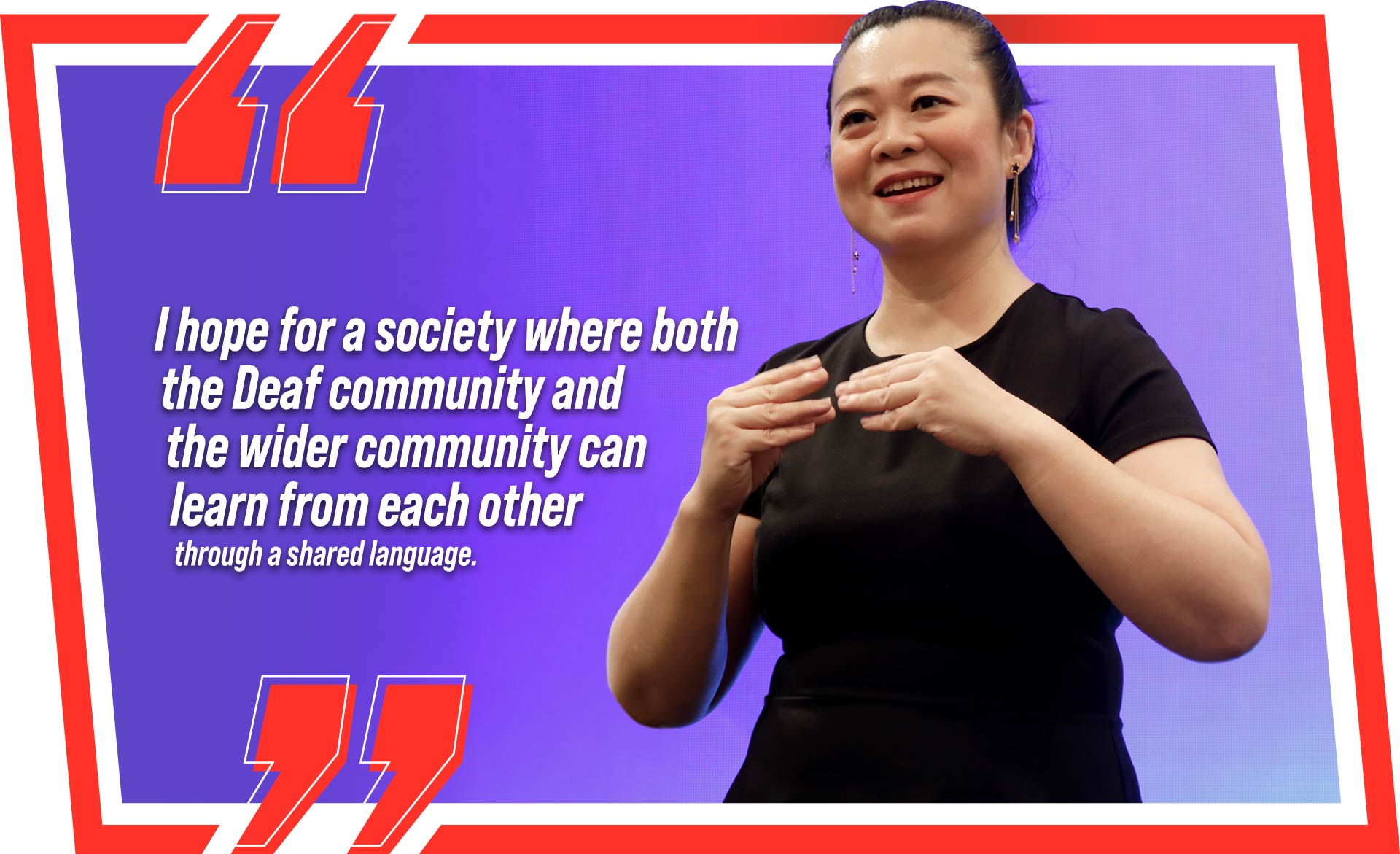
(Photo by Type A)
“I would like Singaporeans to learn at least five words in sign language: ‘Singapore’, ‘support’, ‘love’, ‘thank you’ and ‘I love you’,” Lily says. “My hope is for an inclusive society where both the Deaf community and the wider community can learn from each other through a shared language.”
– Lily Goh, 44, Deaf arts and music practitioner; founder of ExtraOrdinary Horizons
We use cookies to tailor your browsing experience. By continuing to use Gov.sg, you accept our use of cookies. To decline cookies at any time, you may adjust your browser settings. Find out more about your cookie preferences here .
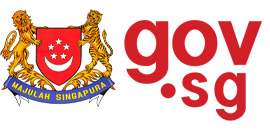








![[Updated] Limitations on In-Person Visits to Hospitals and Residential Care Homes](/images/default-source/media/gov/201121_in-person_visits.jpeg?Status=Master&sfvrsn=a948042_0;mw=1000&hash=AEBFFAB60CB60B4BFD8B18367921A5EE)

